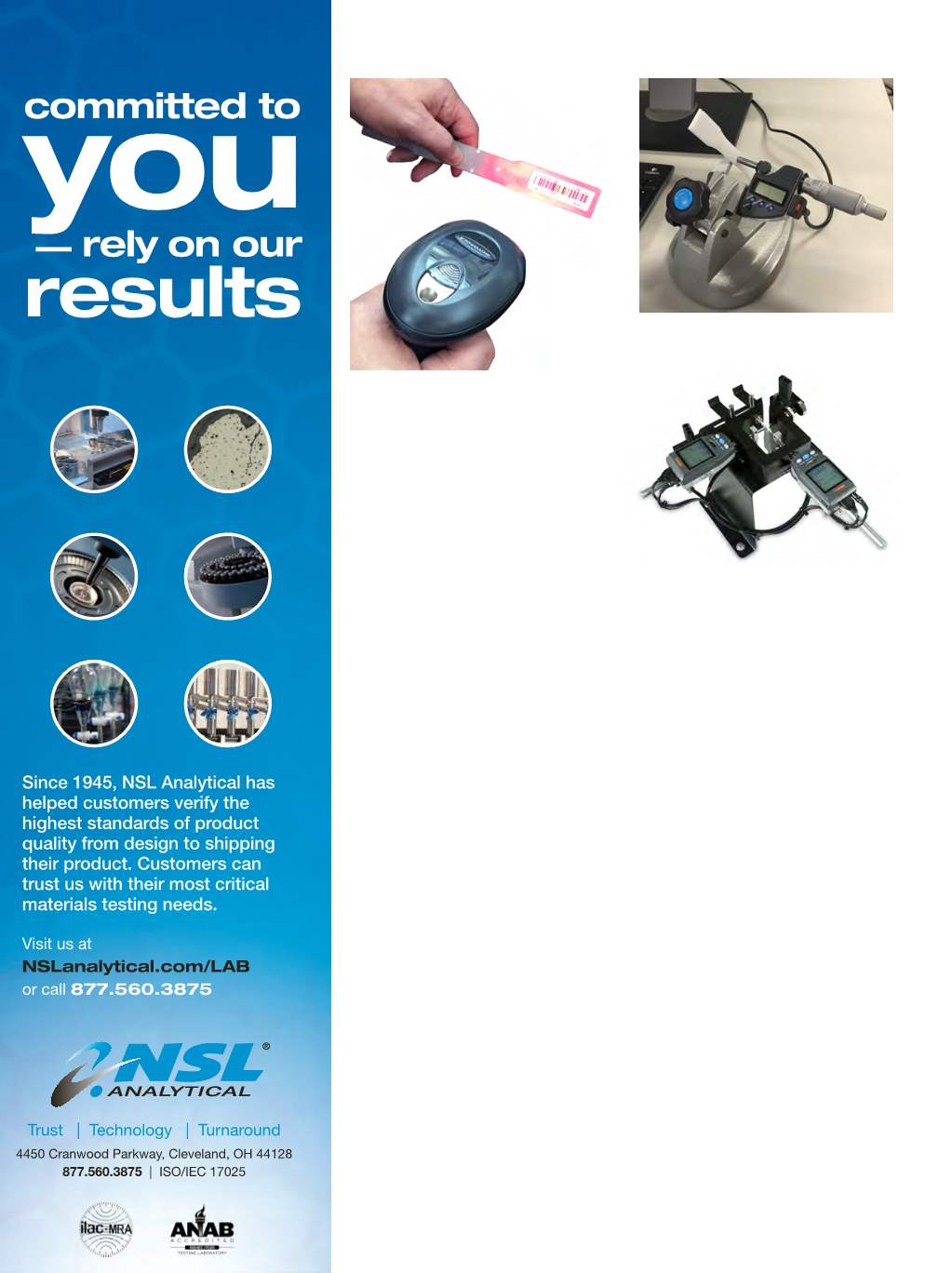

AUTOMATION ADVANTAGES
Automated solutions offer vari-
ous levels of benefits and often do not
require a full robotic testing system.
This is known as the
automation con-
tinuum.
This continuum offers phases
of automation and allows laboratories
to automate parts of their testing pro-
cess, usually starting with their greatest
pain point such as data entry. By adding
barcode labeling and a barcode reader,
all the necessary batch and sample in-
formation can be loaded into a testing
system or LIMS by simply scanning a
barcode. Not only does this decrease
variability, it frees up valuable opera-
tor time to perform other tasks and re-
quires no special training (Fig. 3).
Another challenge that can be
easily automated is specimen measure-
ment. Automating measurements can
be as simple as changing fromamanual
micrometer to a digital micrometer on
a stand (Fig. 4). The specimen is load-
ed into the micrometer mounted on a
stand. The red upload button on the mi-
crometer is pressed and the measure-
ment value is automatically loaded into
the testing software. If further automa-
tion is desired, an automated measure-
ment device that can measure width
and thickness at the same time can also
be used (Fig. 5). With this solution, the
specimen is loaded into a device that
measures both width and thickness and
then automatically loads the values
into the testing software. If multiple
measurements are desired, the auto-
matic device can store separate values
and then transfer the desired measure-
ment value into the testing software.
This also saves valuable operator time
and reduces variability.
Moving through the typical testing
sequence, the next step is extensometer
attachment. This can be especially time
consuming and requires a lot of skill
and concentration to attach properly.
By adding an automatic extensometer,
setup time is reduced because the au-
tomatic extensometer sets the desired
gauge length (Fig. 6). Results variability
is decreased, as the extensometer auto-
matically attaches properly to the spec-
imen and in the same location for every
sample. Lastly, using an automatic ex-
tensometer improves operator safety
as less time is spent in the testing area,
minimizing physical fatigue.
CASE STUDY
During a side-by-side experi-
ment that compares the benefits of
a semi-automated test setup to a
Fig. 3 —
Barcode labeling and a barcode
reader allow necessary batch and sample in-
formation to be loaded into a testing system
or LIMS by scanning a barcode.
Fig. 4 —
Digital micrometer on a stand.
Fig. 5 —
An automatedmeasurement
device measures width and thickness at the
same time.
Elemental Thermal Wet Chemistry Metallurgical Organic Optical Elemental Thermal Wet Chemistry Metallurgical Organic Optical

















